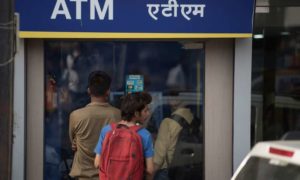Offline transactions are subject to a limit of Rs 200 per transaction and an overall limit of Rs 2,000 for all transactions until balance in the account is replenished.
If you happen to be in a remote village without any cash or no internet connectivity, you can still buy something or do any transaction up to a limit of Rs 200 using the mobile phone or wallet. This is possible now as the Reserve Bank of India (RBI) has allowed offline mode of small-value payments using any channel or instrument like cards, wallets or mobile devices with immediate effect
How is it done?
Offline transactions are subject to a limit of Rs 200 per transaction and an overall limit of Rs 2,000 for all transactions until balance in the account is replenished. Customers should store Rs 2,000 in the mobile device, wallet or card.
An offline digital payment means a transaction which does not require internet or telecom connectivity. Under this new framework, such payments can be carried out face-to-face (proximity mode) using any channel or instrument like cards, wallets and mobile devices. Such transactions would not require an Additional Factor of Authentication (AFA). “While this is primarily for the acceptance of small value transactions only, it is a big move towards achieving the overall financial inclusion objectives of the country,” said Deepak Chandnani, MD, South Asia & Middle East, Worldline.
No immediate alerts
Since the transactions are offline, alerts (by way of SMS or e-mail) will be received by the customer after a time lag. The offline mode of payment can be enabled only after obtaining specific consent of the customers. Customers will enjoy protection under the provisions of circulars limiting customer liability issued by the RBI, as amended from time to time. However, replenishment of the used limit should be allowed only in the online mode with AFA.
Why offline mode?
There has been a considerable growth in digital payments using mobile phones, cards and wallets. Lack of internet connectivity or low speed of internet, especially in remote areas, is a major impediment in adoption of digital payments. Against this backdrop, providing an option of off-line payments through cards, wallets and mobile devices is expected to further the adoption of digital payments. The Reserve Bank has been encouraging entities to develop offline payment solutions. “RBI’s new framework for retail digital payment in offline mode is much required as internet connectivity gets erratic in rural areas and hampers digital transactions,” said Nipun Jain, CEO, RapiPay Fintech.
Pilot project successful
The RBI said three pilots were successfully conducted under the scheme in different parts of the country during the period from September 2020 to June 2021 involving small-value transactions covering a volume of 2.41 lakh for value Rs 1.16 crore. The learnings indicated that there is a scope to introduce such solutions, especially in remote areas. Given the experience gained from the pilots and the encouraging feedback, the RBI has now introduced a framework for carrying out retail digital payments in offline mode across the country.





































